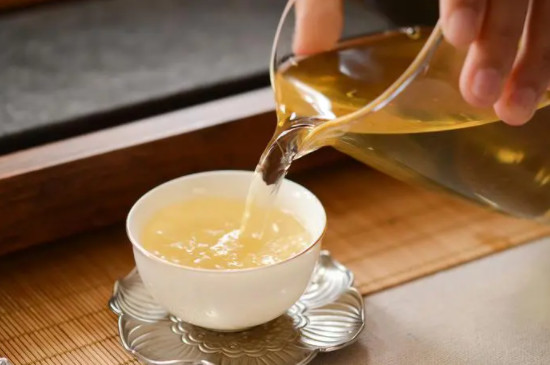Exploring the Intricacies of White Tea: Aging, Color, and Craftsmanship
White tea, celebrated for its delicate aroma and nuanced flavors, undergoes a fascinating metamorphosis as it ages, evolving in both appearance and taste. Among the various types of tea, white tea stands out for its minimal processing, primarily consisting of withering and drying. Originating from the Fujian province of China, notable varieties include Silver Needle, White Peony, and Shou Mei.

The Evolution of White Tea Infusions
White tea's journey through time is beautifully reflected in the changing hues of its brew. As a lightly oxidized tea, white tea possesses the unique quality of improving with age, developing deeper and more complex flavors. Initially, the infusion of freshly harvested white tea leaves exhibits a pale green color, indicative of its youthfulness. However, as the tea ages, the infusion gradually transforms into shades of apricot yellow, then further deepening into warm chestnut brown, signifying its maturity. Moreover, factors such as brewing duration and water temperature can influence the resulting infusion color, adding layers of subtlety to the sensory experience.
Craftsmanship Behind White Tea
The allure of white tea lies not only in its aging potential but also in the meticulous craftsmanship involved in its production. Unlike other types of tea that undergo extensive processing, white tea retains much of its natural essence through minimal intervention. The renowned white teas from Fujian, particularly those from Fuding, exemplify this dedication to purity and simplicity. Silver Needle, characterized by its long, silver-white buds, represents the pinnacle of white tea craftsmanship, showcasing the delicate beauty of unopened leaf buds. White Peony, with its combination of buds and young leaves, offers a slightly fuller flavor profile while still embodying the elegance of white tea. Shou Mei, featuring broader leaves and a more mature appearance, provides a distinct taste experience, appreciated by connoisseurs for its earthy richness.
Freshness vs. Aging: A Matter of Taste
The choice between fresh and aged white tea hinges on personal preference and desired flavor profiles. Freshly harvested white tea delights with its crisp, floral notes and subtle sweetness, offering a refreshing and invigorating experience. In contrast, aged white tea captivates with its depth and complexity, acquired through years of careful maturation. Aged white tea infusions tend towards a golden hue, with hints of red indicating the tea's transformation over time. However, excessive redness may suggest oversteeping or excessive processing, detracting from the tea's intended character.
In conclusion, white tea's journey from leaf to cup is a testament to the artistry and patience of tea artisans. Its evolving colors and flavors, influenced by both time and craftsmanship, offer a captivating exploration for tea enthusiasts. Whether enjoyed fresh or aged, white tea invites us to savor the subtle nuances of nature's bounty, encapsulated in a humble cup of tea.
